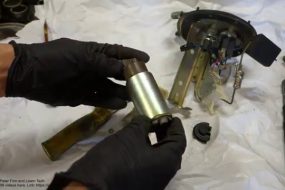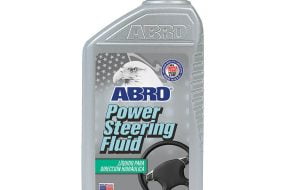
A head gasket is a seal between an engine block and a cylinder head in a vehicle engine. It seals combustion gases in the cylinder to avoid leaks of oil into the cylinder.
If you look close, most cars have a blown head gasket. This can happen if one of the main reasons for having a broken or clogged upfront headlight assembly occur.
When your car breaks down or you’re in a tight spot, it’s important to have some sort of way to get back home. Luckily, there are plenty of ways to do this from a parking space or on the highway.
Can You Start a Car With a Blown Head Gasket?
Yes. It’s very possible to get a car with a blown head gasket running. The key is to get it running right and to ensure there is no open-air problem with the engine or exhaust.
How to Start a Car with a Blown Head Gasket
To start a car with a blown head gasket:
Step One: Ensure You Have Enough Coolant
Ensure there’s enough coolant inside your radiator and the reservoir. This is because one of the major signs of a blown head gasket is having an overheated car/engine.
If there is not enough coolant to cool the engine, you may encounter more problems than usual and your car may not start.
If the car or the engine is hot, you are advised to open the hood of the car and allow the engine to cool down before trying to start the car again.
Also, it is important you miss your coolant with water and make sure you don’t run out it while trying to start a car with a blown head gasket.
Step Two: Seal The Head Gasket
Since it has been established that before a head gasket gets fully blown, it will start with a small crack that can widen and become a pain in the as*.
If you have your tools with you and you know your way around your engine, you can open it up and use a head gasket sealer to seal the cracked head gasket.
This will give you more room for possible start and enables you to drive the car to an auto shop for a proper solution.
Step Three: Start the Car
With this in check, you can go ahead to start the car. If the head gasket is not full-blown, the car will be able to start.
If the problem is too much for the engine, the engine will turn over but won’t start. In this case, you are advised to tow the car to an auto shop for a proper diagnosis.
However, for a safer approach towards the blown head gasket, replacement is advised as driving to patch up your driving with a blown head gasket will make matters worse by damaging the engine even further.
The best way to do this is to remove the old head gasket (if you have one), clean the piece, and install the new one. Make sure to follow proper procedures for all procedures related to the new head gasket installation.
How Long Can You Run Engine With a Blown Head Gasket?
The length of time you can run your engine with a blown head gasket is determined by the amount of airflow in the engine bay.
The length of time it takes for the air to flow with the engine and for it to exit the engine in the right direction is a better indication of how long the engine will run with a blown head gasket.\
What Are The First Signs of A Blown Head Gasket?
The first sign of a blown head gasket is a noisy engine. This is usually a result of a broken or clogged upfront headlight assembly.
Next, is a lack of airflow on the road. While this is a small detail it means you have a lower chance of having a gasket burst in your car during a thunderstorm or on a sunny day.
Other early signs that are likely to be noticed when there is a blown head gasket are:
- Noisy engine.
- Poor engine performance.
- Leaks in the vehicle.
- Thick white exhaust smoke.
- Engine overheating.
If there are no other signs of a blown head gasket in the car, you would be well-advised to take it to the dealer for an evaluation. They can usually tell you what the problem is and what to do about it.
However, you should take the car to the garage if the following signs are detected:
- Smell like burning forced air
- Noisy engine
- No airflow in the garage
- Miscellaneous defects such as a loose wheel
What To Do When a Head Gasket Blows In A Car?
When a head gasket blows in a car, you will notice everything in your car text or image will be blurred or black. It can also be difficult to see in the mirror because all the lights and the front end will be blurred.
If you notice a clogged or muddy car, open the windows and remove the packed earth or other debris from the road. This may help the car to expand and provide better airflow. Once the problem is reported to the dealer, the diagnostic work-up will be different.
The first step is to determine how much force the problem occurs by pushing a button on the car and listening for the sound. Next, take the car to the dealer for repairs.
If the problem persists, you should contact the manufacturer for a replacement head gasket. This is usually less expensive than replacing the head gasket yourself and you’ll be fine if the problem persists.
However, since the garage is not the best place to look for a blown head gasket, you shouldn’t complain too much about it.
Besides, you may find out that there are other problems with the car that are worse than what you are experiencing at the moment.
Conclusion
As you can see from the above-mentioned symptoms, it’s very important to take the car to the garage for a check-up. You don’t know how long a blown head gasket will last, and you don’t know if the car will run when it’s repaired.
The sooner you fix a blown head gasket, the better. It prevents the vehicle engine from further damage. Continuous driving with a blown head gasket can be dangerous.









